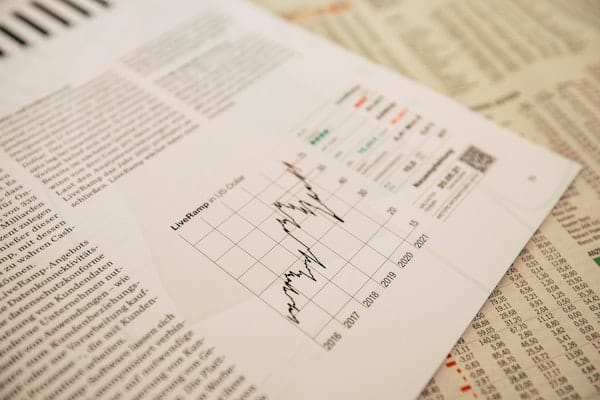Here is a glossary of financial terms B. These financial terms begin with the letter B, including balance sheet, bitcoin, and board of directors.
Contents
Backslash
The backslash is the ” \ ” symbol that is also called a backward slash, whack, or reverse solidus. It is located on U.S. keyboards above the Enter key (Return key). The backslash is the mirror image of the slash ” / ” symbol.
The backslash shares the key with the pipe ” | ” symbol.
Bad debt
A account that will not be paid. It is called an uncollectible account, a doubtful account, or, a bad debt.
Balance sheet
The balance sheet is one of the three financial statements. The balance sheet format shows assets, liabilities, and equity. This statement shows the accounting equation where assets equal liabilities plus equity.
The balance sheet is also called the statement of financial position.
Bear
A bear is an investor who believes a security or the entire market will go down. Bearish investors could sell an investment they believe would decrease. A bear also could take a short position in a stock to profit on the expected price decrease.
A bear believes prices will fall. A bull believes prices will rise.
Bitcoin
Bitcoin is the first and largest cryptocurrency. It is based on open source peer-to-peer (P2P) blockchain technology. It is not owned or controlled by any one entity. Bitcoin allows for low-cost worldwide payments.
In 2022, bitcoin has a circulating supply of about 19 million with a supply limit of 21 million. The all-time high for bitcoin was $69,045 in November 2021.
Bitcoin was created in 2008 by a white paper by Satoshi Nakamoto, a pseudonym for an unknown group or individual. Bitcoin first began trading in 2009.
Blockchain
Blockchain is a digital ledger that is publicly distributed and immutable. Transactions are recorded and verified by each member of the network in a block. Each new block is added to the preceding blocks to form a chain or a blockchain.
A notable use of blockchain technology include cryptocurrency such as bitcoin and ethereum. Other uses include supply chain management and counterfeit goods identification.
Board of directors
A board of directors is the governing body of a company or a nonprofit organization. The board of directors hires the management of the company and provides oversight of the company.
The board of directors is elected by shareholders of the company. Every public company is required to have a board of directors. Directors that work for the company are called inside directors. For example, the CEO of the company may also serve as chair of the board, so the CEO is an inside director.
Directors that are not employees of the company are called outside directors or independent directors. The NYSE and the NASDAQ require listed companies to have a majority of independent directors.
The duties of the board of directors are listed in the company’s bylaws. Typical board membership ranges from 8-12 directors.
The board of directors can also be called a board of trustees or a board of governors.
Board of trustees
A board of trustees is the governing body of a company or a nonprofit organization. A board of trustees can also be called a board of directors.
Breakeven analysis
Breakeven analysis is a margin of safety calculation. The analysis estimates a company’s revenues, variable costs, and fixed costs. Breakeven analysis is also called cost-volume-profit (CVP) analysis. The breakeven point is when the total costs equal total revenue. There is zero profit at the breakeven point.
Breakeven point
The breakeven point is when the total revenue equals total costs. Profit is zero at the breakeven point.
The breakeven point is calculated in breakeven analysis to assess risk.

Bull
A bull is an investor who believes prices will rise. This could be for a single security or for the market as a whole. A bullish investor could buy the investment to profit on future price increases.
A bull believes prices will rise. A bear believes prices will decrease.


Jeff Mankin teaches financial literacy and Excel. He is the founder of Finally Learn.



